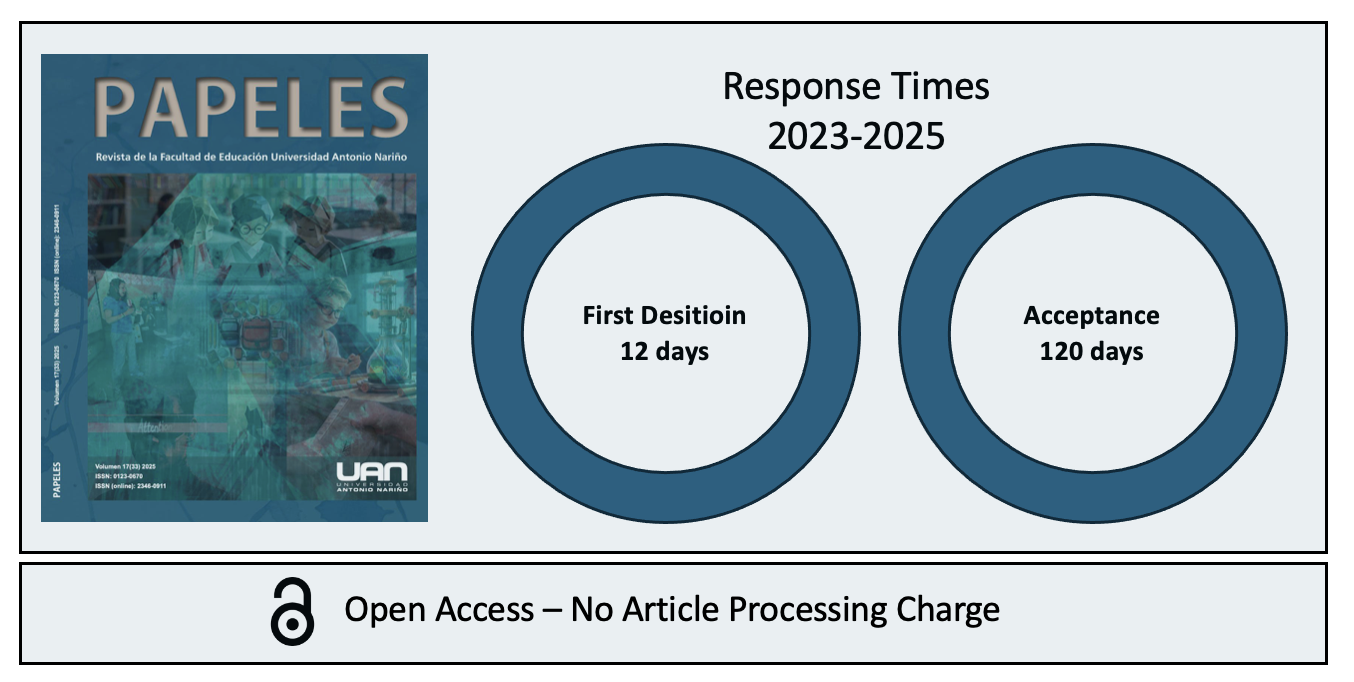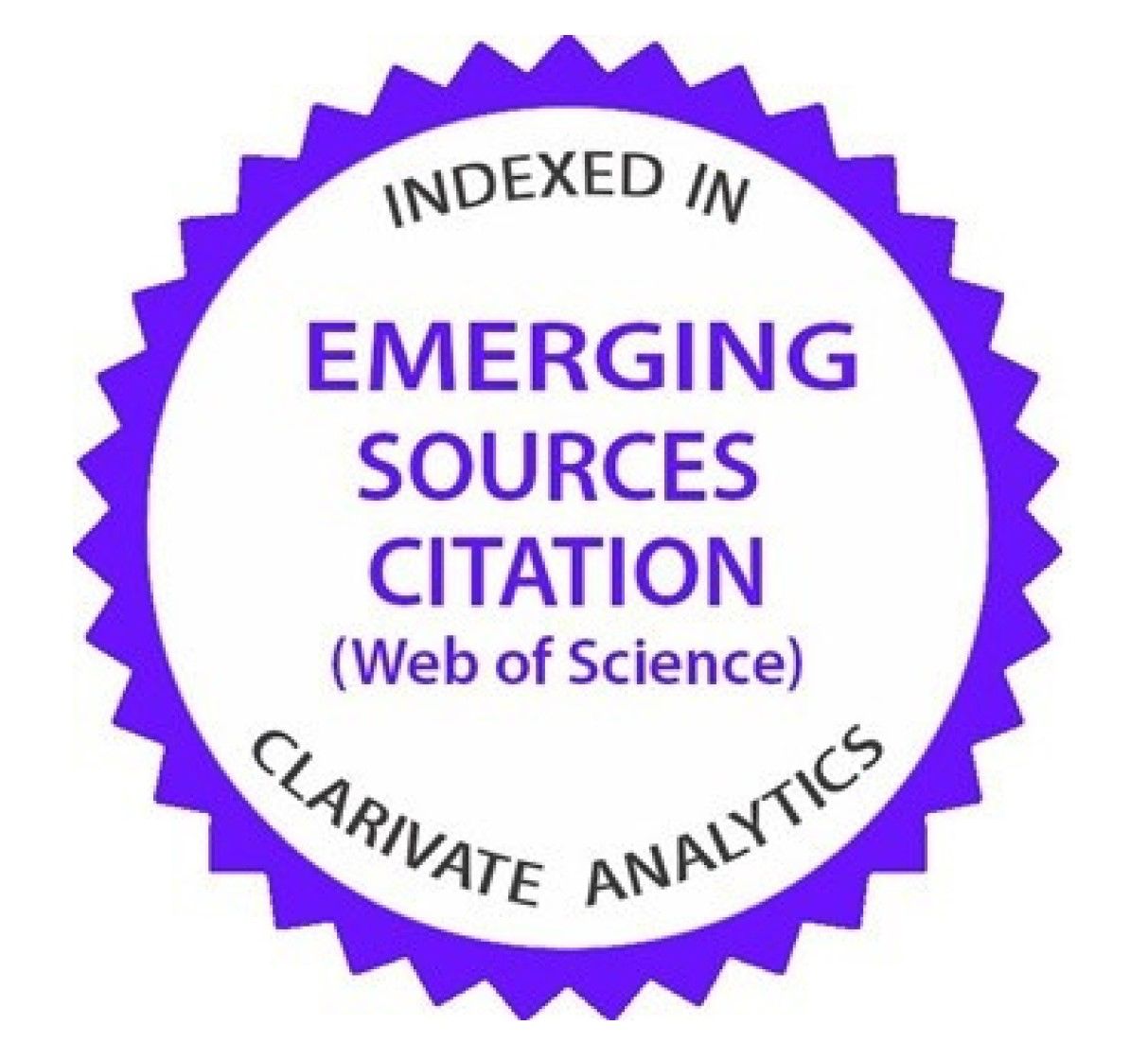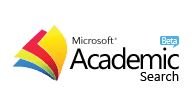Competences formation of teachers in the use of ICT: ¿how to support students as they interact with computing environments?
Keywords:
environment learning, teaching competences, learning strategies, teacher trainingAbstract
This paper proposes the development of certain skills in training teachers in the use of information and communication technology (ICT). In today’s educational settings, the use of computer-based environments are becoming more common in the learning process of students and it involves the active participation of teachers in the design and development of computational scenarios that are flexible preferences learning and subjects that suit their individual differences. To this extent, these scenarios could be used by students effectively and thus achieve desired learning goals. This proposal is based on the developments being conducted by the research group Cognitek National Pedagogical University.
Downloads
References
Angeli, C., Valanides, N., y Kirschner, P. (2009). “Field dependence-independence and instructional-design effects on learners’ performance with a computer-modeling tool”, en: Computers in Human Behavior, N° 25, pp. 1355-1366.
Ausubel, D. P. (1985). Psicología evolutiva: un punto de vista cognoscitivo, México: Trillas.
Azevedo, R. (2005). “Using hypermedia as a metacognitive tool for enhancing student learning? The role of self-regulated learning”, en: Educational Psychologist, 40(4), pp. 199-209.
Azevedo, R., y Cromley, J. G. (2004). “Does training on self-regulated learning facilitate students’ learning with hypermedia?”, en: Journal of Educational Psychology, 96(3), 523–535.
Azevedo, R., y Hadwin, A. F. (2005). “Scaffolding self-regulated learning and metacognition: Implications for the design of computer-based scaffolds”, en: Instructional Science, N° 33, pp. 367–379.
Azevedo, R., Guthrie, J. T., y Seibert, D. (2004). “The role of self-regulated learning in fostering students’ conceptual understanding of complex systems with hypermedia”, en: Journal of Educational Computing Research, N° 30, pp. 87-111.
Cardozo, A. (2004). Influencia de la dimensión dependencia independencia de campo sobre el aprendizaje en contextos instruccionales asistidos por el computador, Paperpresented at the
Congreso Internacional Virtual de Educación, Islas Baleares, España.
Chen, S. Y. y Macredie, R. (2002). Cognitive styles and hypermedia navigation: Development of a learning model, en: Journal of the American Society for Information Science and Technology, 53(1), pp. 3-15.
Downes, S. (2006). Learning Networks and Connective Knowledge, en: Discussion Paper, N° 92 Instructional Technology Forum [online document], available at http://it.coe.uga.edu/ itforum/paper92/paper92.html, consulted 18th September 2012.
Ericsson, K. A. y Simon, H. A. (1993). Protocol Analysis: verbal reports as date. Cambridge, MA: The MIT Press.
Facundo, A. (2009). “Análisis sobre la deserción en la educación superior a distancia y virtual: El caso de la UNAD - Colombia”, en: Deserción en las instituciones de educación superior a distancia en América Latina y el Caribe, República Dominicana: Ediciones UAPA.
Guisande, M. A., Páramo, M. F, Tinajero C. y Almeida, L. S. (2007). Field dependenceindependence (FDI) cognitivestyle: Ananalysis of attentionalfunctioning, en: Psicothema, 19(4), pp. 572-577.
Guo, Y-G. y Wang, S-L. (2010). Designing a Knowledge Awareness Navigation for Ubiquitous Learning Environment. Available at
Hadwin, A. y Winne, P. (2001). CoNoteS2: A software tool for promoting self-regulation, en: Educational Research and Evaluation, 7(2/3), pp. 313-334.
Handal, B. y Herrington, T. (2004). On being dependent and independent in computer based learning environments, en: e-Journal of Instructional Science and Technology, (7)2, pp. 1-10.
Hederich, C. (2007). Estilo cognitivo en la dimensión de dependencia-independencia de campo. Influencias culturales e implicaciones para la educación, Bogotá: Universidad Pedagógica Nacional.
Jacobson, M. J. y Azevedo, R. (2008). Advances in scaffolding learning with hypertext and hypermedia: Theoretical, empirical, and design issues, en: Educational Technology, Research, and Development, N° 56, pp. 1–3.
Jonassen, D. H. (2006). Modeling with Technology. Mindtools for Conceptual Change, 3th ed., New Jersey: Pearson Education.
Jones, V. y Jo, J. H. (2004). Ubiquitous Learning Environment: An Adaptive Teaching System Using Ubiquitous Technology. Australasian Society for Computers, en: Learning In Tertiary Education, pp. 468-474.
Klein, D. C. D. (1998). “‘I’ve seen before’. The effects of self-monitoring and multiple context instructionon Knowledge representation and transfer amount middle school students”, en: CSE Technical Reports, N° 466, Los Angeles, CA: University of California.
Kramarski, B. y Mizrachi, N. (2006a). “Online interactions in a mathematical classroom”, en: Educational Media International, 43(1), pp. 43-50.
Land, S. y Greene, B. (2000). “Project-based learning with the World Wide Web: A qualitative study of resource integration”, en: Educational Technology Research y Development, 48(3), pp. 61-78.
Lave J. y Wenger, E. (2002). “Legitimate peripheral participation’ in Communities of Practice”, en: R. Harrison (ed.) Supporting lifelong learning: Volume 1 – Perspectives on learning, London y New York: RoutledgeFalmer, pp. 111-126. Lee, C. H. M., Wing C., Y., Rai, S., y Depickere, A. (2005). “What affect student cognitive style in the development of hypermedia learning system?”, en: Computers y Education, 45(1), pp. 1-19.
López, O. (2008). “Estilo cognitivo y logro académico en ambientes hipermediales”, en: J. Sánchez (ed.) Nuevas ideas en informática educativa, vol. 4, Santiago de Chile: Universidad de Chile, pp. 209-216.
López, O. (2010). Aprendizaje autorregulado, estilo cognitivo y logro académico en ambientes computacionales. Tesis doctoral no publicada. Bogotá: Universidad Pedagógica Nacional.
López, O. y Hederich, C. (2010). “Efecto de un andamiaje para facilitar el aprendizaje autorregulado en ambientes hipermedia”, en: Revista Colombiana de Educación, N° 58, 14-39.
López, O., Hederich, C., y Camargo, A. (2011). “Estilo cognitivo y logro académico”, en: Educación y Educadores, 14(1), pp. 67-84.
Molenaar, I., Roda, C., Boxtel, C., y Sleegers, P. (2012). “Dynamic scaffolding of socially regulated learning in a computer-based learning environment”, en: Computers y Education, N° 59, pp. 515-523.
Moos, D. C., y Azevedo, R. (2008). “Monitoring, planning, and self-efficacy during learning with hypermedia: The impact of conceptual scaffolds”, en: Computers in Human Behavior, N° 24, pp. 1686-1706.
Papert, S. y Idit, H. (1991). Constructionism, Norwood, NJ: Ablex Publishing.
Parsad, B. y Lewis, L. (2008). Distanceeducation at degree-grantingpostsecondaryinstitutions: 2006–07 (NCES 2009–044). Washington, DC: National Center for Education Statistics - Institute of Education Sciences - U.S. Department of Education.
Pintrich, P. R. (2000). “The role of goal orientation in self-regulated learning”, en: Boekaerts, M., Pintrich, P. y Zeidner, M. (eds.). Handbook of self-regulation, San Diego, CA: Academic Press, pp. 451–502.
Pinzón, J. (2011). Metacognición y logro académico en diferentes modalidades educativas, según la implementación de una estrategia de aprendizaje basada en las preferencias estilísticas del estudiante. Tesis doctoral no publicada. Bogotá: Universidad Pedagógica Nacional.
Potashnik, M. y Capper, J. (1998). “Distance Education: Growth and Diversity”, en: Finance and Development.
Sanabria, L. y Macias, D. (2006). Formación de competencias docentes: diseñar y aprender con ambientes computacionales, Bogotá: Imprenta Nacional.
Schunk, D. H. y Zimmerman, B. J. (1994). Selfregulation of learning and performance: Issues and educational applications, Hillsdale, NJ: Erlbum.
Shute, B. y Towle, V. (2003). “Adaptive E-Learning”, en: Educational Psychologist, 38(2), pp. 105-114.
Tennant, M. (1988). Psychology and Adult Learning, London: Routledge.
Tinajero, C., Castelo, A., Guisande, A. y Páramo, F. (2011). “Adaptive Teaching and Field Dependence-Independence: Instructional Implications”, en: Revista Latinoamericana de Psicología, 43(3), pp. 497-510
Unesco (2011). Unesco ICT Competency Framework for Teachers. París: The United Nations Educational, Scientific and Cultural Organization.
Vygotsky, L.S. (1978). Mind in Society, Cambridge, MA: Harvard University Press.
Weller, H. G., Repman, J. y Rooze, G. E. (1994). “The relationship of learning, behavior, and cognitive style in hypermedia based instruction: implications for design of HBI”, en: Computers in the Schools, 10(3/4), pp. 401-420.
Winne, P. H. (2001). “Self-regulated learning viewed from models of information processing”, en: B. J. Zimmerman y D. H. Schunk (eds.), Selfregulated learning and academic achievement: Theoretical perspectives, 2th ed., Mahwah, NJ: Lawrence Erlbaum Associates, pp. 153-189.
Witkin, H. y Goodenough, D. R. (1981). Cognitive styles: Essence and origins, New York: International University Press.
Wood, D., Bruner, J. y Ross, G. (1976). “The Role Of Tutoring In Problem Solving”, en: Journal of Child Psychology and Psychiatry, 17(2), pp. 89-100.
Zimmerman, B. J. (2001). “Theories of selfregulated learning and academic achievement: An overview and analysis”, en: B. Zimmerman y D. Schunk (eds.), Self-regulated learning and academic achievement: Theoretical perspectives, Mahwah, NJ: Lawrence Erlbaum Associates, Inc., pp. 1–38.
Zimmerman, B. J. (2008). “Investigating self-regulation and motivation: Historical Background, methodological developments, and future prospects”, en: American Educational Research Journal, 45(1), pp. 166-183.
Downloads
Published
-
Abstract278
-
PDF (Español)90
How to Cite
Issue
Section
License

This work is licensed under a Creative Commons Attribution-NonCommercial-ShareAlike 4.0 International License.






